1. Woodstock 1969 – The Birth of a Cultural Icon
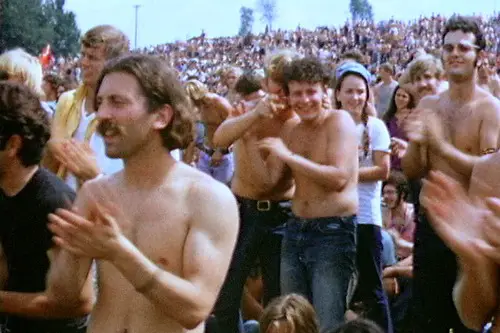
In August 1969, over 400,000 people gathered on Max Yasgur’s farm in Bethel, New York, for what would become the most iconic music festival in history. Originally planned for 50,000 attendees, the event quickly transformed into a massive gathering, setting the stage for future music festivals. The festival featured legendary performances by artists like Jimi Hendrix, Janis Joplin, and The Who, capturing the spirit of the counterculture movement. It was a peaceful assembly that showcased music’s power to unite and inspire.
The media coverage of Woodstock was extensive, with CBS News providing live reports and interviews, bringing the festival into the homes of millions. The event was hailed as a triumph of peace and music, despite challenges such as rain and mud. Woodstock’s success proved that large-scale music festivals could be both commercially viable and culturally significant. Its legacy continues to influence music festivals worldwide, embodying the ideals of love, peace, and music.
2. Altamont Free Concert 1969 – A Tragic Counterpoint
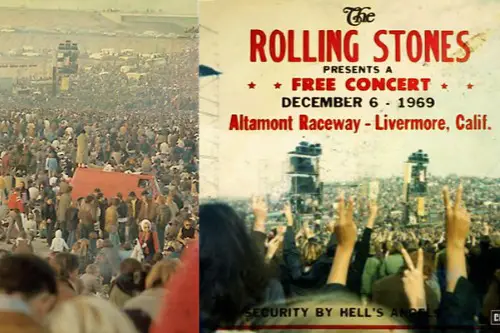
Just four months after Woodstock, the Altamont Free Concert took place in December 1969 at the Altamont Speedway in California. Organized by The Rolling Stones, the event was intended to be a free concert for the people, echoing Woodstock’s ideals. However, the festival was marred by violence, including the fatal stabbing of Meredith Hunter by a Hells Angel during the Rolling Stones’ performance. The incident was captured on film and became a symbol of the darker side of the 1960s counterculture.
The media coverage of Altamont was intense, with news outlets across the country reporting on the violence and chaos. The event was widely criticized for its lack of proper security and organization, leading to a reevaluation of how large public events should be managed. Altamont’s tragic outcome served as a cautionary tale, contrasting sharply with the peaceful image of Woodstock. It highlighted the challenges of organizing large-scale events and the potential for unforeseen consequences.
3. Woodstock ’99 – From Revival to Riot
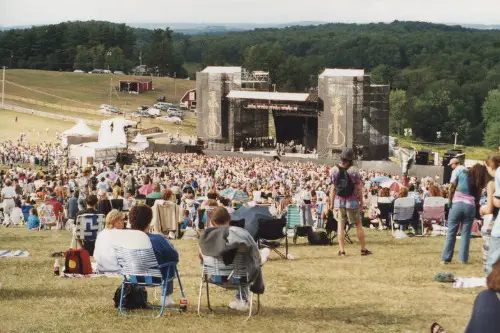
In July 1999, Woodstock was revived in Rome, New York, to commemorate its 30th anniversary. The festival aimed to recapture the spirit of the original event, featuring artists like Korn, Limp Bizkit, and Metallica. However, the three-day festival descended into chaos, with reports of fires, riots, and widespread property damage. The unrest was partly attributed to the high cost of concessions, overcrowding, and the aggressive tone of some performances.
Media coverage of Woodstock ’99 was dominated by images of destruction and violence, with news outlets across the country reporting on the mayhem. The event was widely criticized for its poor planning and lack of adequate facilities, leading to a significant backlash against the organizers. Woodstock ’99’s failure prompted discussions about the commercialization of music festivals and the challenges of recreating the ethos of the original Woodstock. It served as a stark reminder of the potential pitfalls of large-scale event planning.
4. Coachella 2004 – The Rise of a Cultural Phenomenon
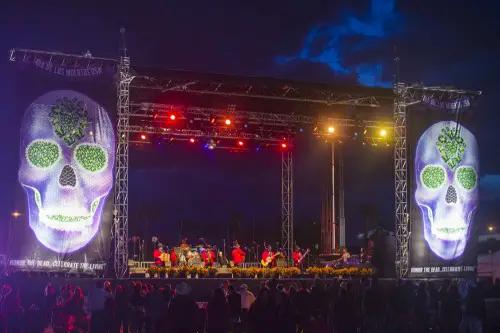
Coachella Valley Music and Arts Festival, held annually in Indio, California, has become one of the most influential music festivals in the world. The 2004 edition was particularly notable, featuring performances by Radiohead, Kraftwerk, and the reunited Pixies. The festival’s success helped solidify its reputation as a premier destination for music lovers and artists alike. It also marked a turning point in the festival’s evolution, attracting a more diverse audience and expanding its cultural impact.
The media coverage of Coachella 2004 highlighted its growth and the increasing popularity of music festivals in the United States. The event was praised for its eclectic lineup and the seamless integration of music and art. Coachella’s success in 2004 set the stage for its future as a global cultural event, influencing the development of other major festivals. It demonstrated the potential for music festivals to evolve into multifaceted cultural experiences.
5. Bonnaroo 2008 – A Festival of Diversity and Community
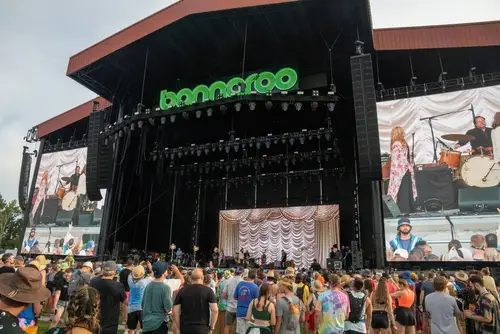
Held annually in Manchester, Tennessee, the Bonnaroo Music and Arts Festival has become known for its diverse lineup and strong sense of community. The 2008 festival featured performances by Pearl Jam, Metallica, and Kanye West, among others. The event attracted a large and varied audience, drawn by the festival’s reputation for inclusivity and its commitment to showcasing a wide range of musical genres. Bonnaroo’s emphasis on community and shared experience has been a hallmark of its identity.
Media coverage of Bonnaroo 2008 focused on the festival’s unique atmosphere and the positive experiences of attendees. The event was praised for its organization and the quality of its performances. Bonnaroo’s success in 2008 reinforced its status as a leading music festival and highlighted the growing trend of multi-day, multi-genre festivals in the United States. It underscored the importance of community and diversity in the modern festival experience.
6. Lollapalooza 2011 – A New Era for a Classic Festival
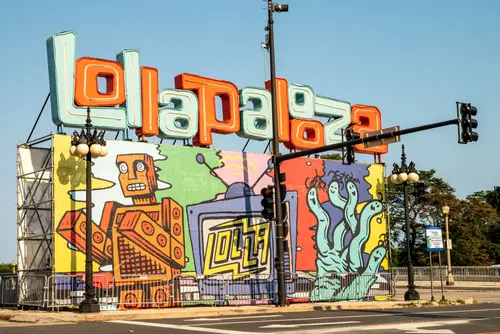
Lollapalooza, originally founded by Perry Farrell in 1991, has undergone significant transformations over the years. The 2011 edition marked a new era for the festival, featuring performances by Eminem, Foo Fighters, and Coldplay. The event showcased the festival’s ability to adapt to changing musical trends while maintaining its core identity. Lollapalooza’s expansion into Chicago and its subsequent growth have made it one of the most prominent music festivals in the United States.
Media coverage of Lollapalooza 2011 highlighted the festival’s diverse lineup and its appeal to a broad audience. The event was praised for its organization and the quality of its performances. Lollapalooza’s success in 2011 reinforced its status as a leading music festival and demonstrated its ability to evolve with the times. It also underscored the importance of innovation and adaptability in the competitive festival market.
7. Firefly Music Festival 2012 – Delaware’s Musical Debut

In 2012, the Firefly Music Festival debuted in Dover, Delaware, introducing the state to the world of major music festivals. The inaugural event featured performances by The Black Keys, Jack White, and John Legend, among others. The festival’s success in its first year demonstrated the potential for new festivals to thrive and attract large audiences. Firefly’s emphasis on music, art, and community has been central to its identity.
Media coverage of Firefly 2012 focused on the festival’s debut and the excitement surrounding its arrival in Delaware. The event was praised for its organization and the quality of its performances. Firefly’s success in 2012 set the stage for its future as a significant music festival and highlighted the growing trend of festivals expanding into new regions. It underscored the importance of innovation and community engagement in the modern festival landscape.
8. Bonnaroo 2015 – A Festival Facing Challenges

The 2015 edition of the Bonnaroo Music and Arts Festival in Manchester, Tennessee, featured performances by Kendrick Lamar, Mumford & Sons, and Deadmau5. The event attracted a large audience and showcased a diverse lineup of artists. However, the festival faced challenges related to its commercialization and the changing dynamics of the music festival industry. These issues sparked discussions about the future direction of Bonnaroo and similar festivals.
Media coverage of Bonnaroo 2015 focused on the festival’s lineup and the challenges it faced. The event was praised for its performances but also criticized for aspects related to its commercialization. Bonnaroo’s experience in 2015 highlighted the complexities of maintaining a festival’s identity while adapting to industry trends. It underscored the importance of balancing tradition and innovation in the evolving festival landscape.
9. Coachella 2017 – A Groundbreaking Performance
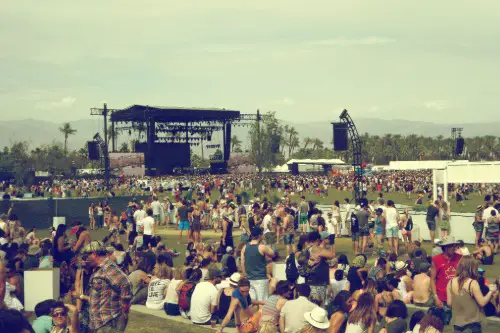
The 2017 edition of the Coachella Valley Music and Arts Festival featured a groundbreaking performance by Beyoncé, who became the first Black woman to headline the festival. Her performance was widely acclaimed for its cultural significance and artistic excellence. The event also featured performances by Radiohead and Kendrick Lamar, further solidifying Coachella’s reputation as a premier music festival. The 2017 festival highlighted the increasing diversity and inclusivity of major music events.
Media coverage of Coachella 2017 focused on Beyoncé’s historic performance and the festival’s diverse lineup. The event was praised for its representation and the quality of its performances. Coachella’s success in 2017 reinforced its status as a leading music festival and demonstrated its commitment to diversity and inclusivity. It also underscored the growing importance of representation in the music industry.
10. Fyre Festival 2017 – A Social Media Disaster
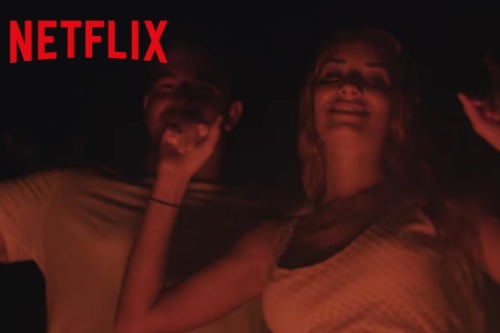
The Fyre Festival, promoted as a luxury music festival in the Bahamas, became infamous for its disastrous execution. Attendees arrived to find inadequate accommodations, poor food, and no musical performances, leading to widespread criticism and media coverage. The event’s failure was attributed to poor planning, lack of infrastructure, and misleading marketing. The Fyre Festival became a cautionary tale about the dangers of influencer-driven events and the importance of proper event planning.
Media coverage of the Fyre Festival focused on the chaos and disappointment experienced by attendees. The event was widely criticized for its lack of organization and the false advertising that led to its promotion. The Fyre Festival’s failure sparked discussions about the ethics of influencer marketing and the responsibilities of event organizers. It underscored the importance of transparency and accountability in event promotion.
11. Woodstock 50 – A Festival That Never Was
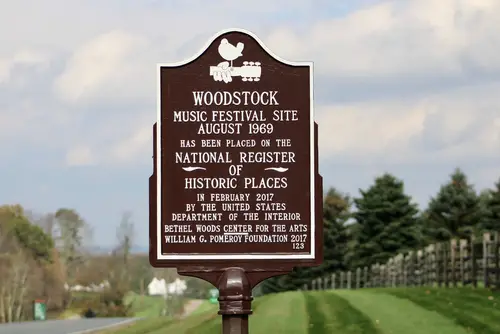
In 2019, plans were announced for Woodstock 50, intended to celebrate the 50th anniversary of the original 1969 festival. However, the event faced numerous challenges, including financial difficulties, venue issues, and artist cancellations. Despite efforts to salvage the festival, it was ultimately canceled due to logistical and financial hurdles. Woodstock 50’s cancellation highlighted the complexities of organizing large-scale events and the challenges of living up to the legacy of the original Woodstock.
Media coverage of Woodstock 50 focused on the challenges faced by the organizers and the eventual cancellation of the event. The festival’s failure was widely reported and discussed in the media, with many expressing disappointment over its inability to come to fruition. Woodstock 50’s cancellation sparked debates about the commercialization of music festivals and the difficulties of recreating iconic events. It underscored the importance of careful planning and realistic expectations in event management.
12. Astroworld Festival 2021 – A Tragedy in Houston
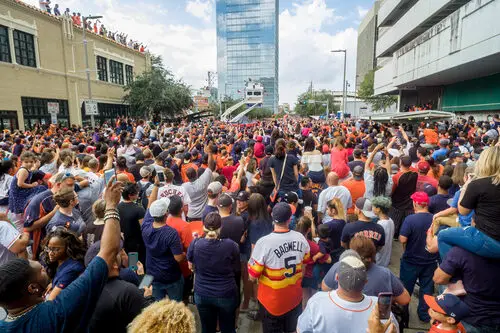
In November 2021, the Astroworld Festival in Houston, Texas, ended in tragedy when a crowd surge during Travis Scott’s performance led to multiple deaths and hundreds of injuries. Attendees were caught in a dangerous crush near the stage, creating chaos and panic that overwhelmed security and medical personnel. The incident shook the music world, sparking urgent conversations about festival safety and crowd management. Families, fans, and organizers were left grappling with the devastating aftermath of what was meant to be a celebration of music.
The media coverage was immediate and intense, highlighting both the human toll and questions about how the festival was organized. Investigations were launched into crowd control measures, emergency planning, and the responsibilities of performers and organizers. The tragedy prompted a nationwide examination of safety protocols at large events, influencing how festivals plan for emergencies. Astroworld 2021 remains a somber reminder of the risks inherent in live events and the critical importance of rigorous safety measures.
This post 12 Times Music Festivals Became National Headlines was first published on Greenhouse Black.


